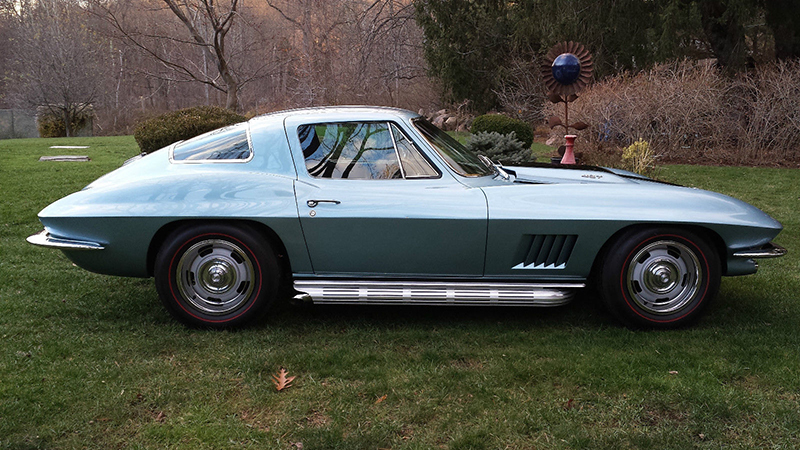If you own a classic car, official certification is the best way to verify its authenticity. Organizations such as the Classic Car Club of America, Bloomington Gold, and the National Corvette Restorers Society have certification programs and judging events specifically for this purpose.

According to the eBay listing, the 1975 Corvette shown at the top of this post is certified as a survivor by Bloomington Gold.
Although the judging process varies from group to group—and for individual specialists—the purpose is consistent throughout the collector car hobby: to document that a vehicle is in factory-original condition, while accounting for an acceptable amount of wear and tear. Judges are experts in the marques they evaluate, with a deep knowledge of history, engine and chassis construction, factory paint, and interior finishes. eBay offers a vast selection of restoration guides like these for the Corvette.

This unrestored barn-find 1961 Jaguar E-Type was certified by the Jaguar Heritage Trust.
Some organizations such as Bloomington Gold include special “survivor” categories for unrestored cars. The Classic Car Club of America (CCCA) puts both under the same umbrella but differentiates between “full classics,” unusual, exceptionally engineered vehicles that were expensive when new, and “classics,” vehicles in factory-original condition produced between 1915 and 1948. The organization’s website includes a list of American pre-War vehicles considered to be full classics, including production numbers.

In addition to certifying organizations, bona fide specialists can also certify the authenticity of a classic car like this 1967 Corvette certified by Al Grenning.
Research Before Restoration
If you are interested in certifying your vehicle, conduct research before beginning restoration. All the organizations listed above have websites that detail judging criteria, but it’s also helpful to go to one of the organization’s sanctioned shows, which often include classes.
For example, the annual Bloomington Gold Corvette show scheduled for the weekend of June 22-24 at the Indianapolis Motor Speedway features restoration workshops, guiding Corvette owners through the frame-off process of mechanical rebuilding, body, and paintwork.
Bloomington Gold recognizes characteristics such as overspray and orange peel typical of factory-original cars that may have been corrected in an over-restored vehicle. In addition, instructors cover new-old stock parts, matching numbers, paint codes and more. (See “How To Buy New Old Stock (NOS) Parts on eBay.”)

Certification increases the value of a classic car. Bidding is likely to heat up for this rotisserie-restoration 1968 Corvette with Bloomington Gold status.
Judges don’t have time to answer questions when they are out on the field evaluating cars, but most are happy to spend a few minutes during off-hours answering questions from owners in the process of restoring their vehicles.
NCRS, an outgrowth of the Corvette Collector’s Club founded in 1974, offers several document services that enable owners to track down what dealership their Corvette was first delivered to as well as awards confirmation that a particular vehicle has met the organization’s judging standards. An online glossary includes terms used in the judging process, as well as an explanation of the judging categories.
Most certification requires that a vehicle is in good running condition, whether it has been restored or not. Car owners demonstrate that their vehicle is road-worthy by participating in a driving tour as part of the car show. Cleanliness is also important, as is tidy mechanical work. For example, judges may check to see if Philips head screws are neatly lined up in areas where they are visible such as the instrument panel.
Certification is not the only way to authenticate your car. A good paper trail documenting the car’s history going back to the factory is invaluable. It should include the VIN number and Monroney (window sticker) if possible, detailing the vehicle’s trim level, factory options, factory paint and upholstery codes. If you don’t have a window sticker, make a list that includes the VIN, parts stampings indicating the engine and transmission type along with the production date to prove that your vehicle in its current condition is factory original.
Attending certification events is a great way to meet fellow collectors, find new resources for parts and restoration and enjoy driving your classic car with a group of individuals who appreciate it as much as you do.





